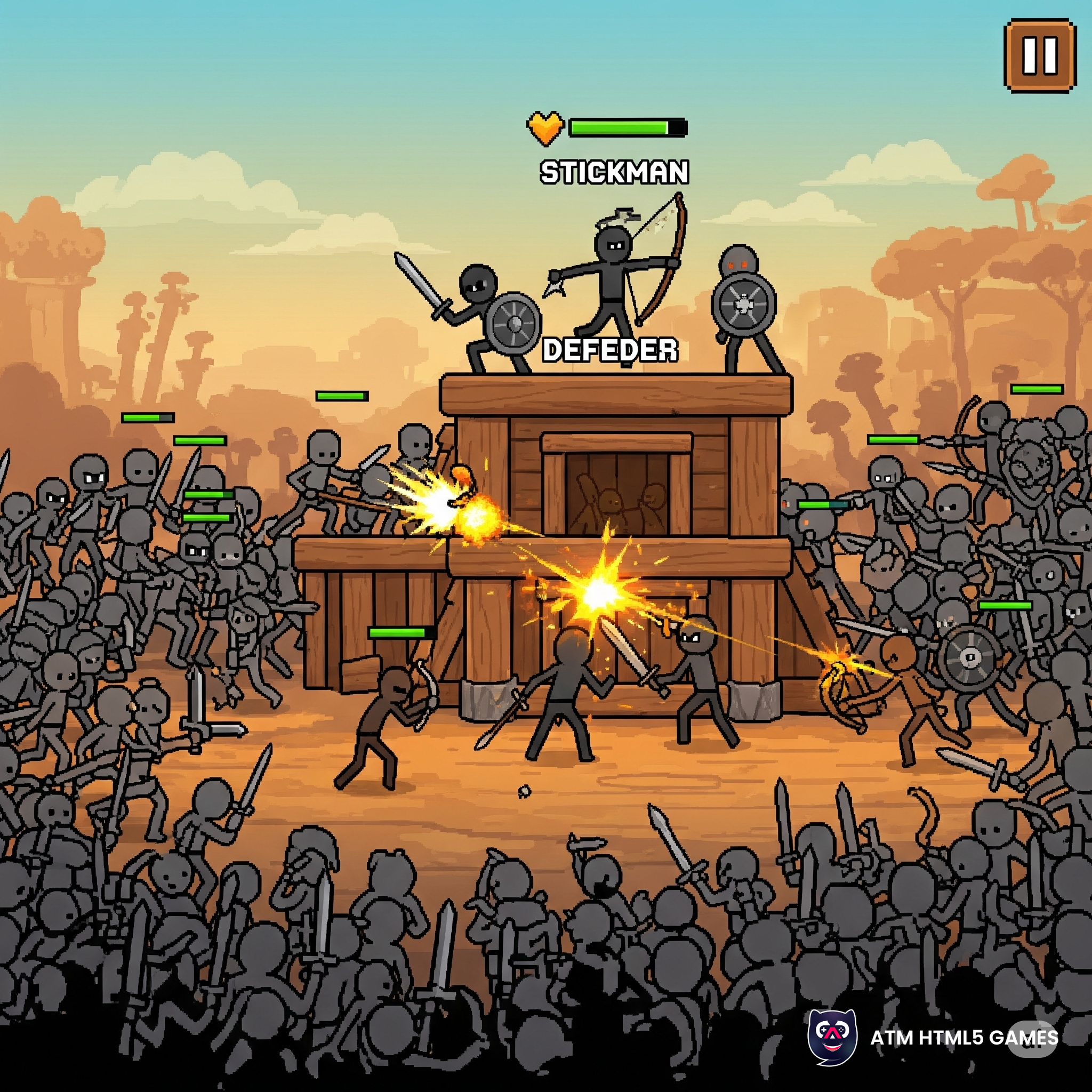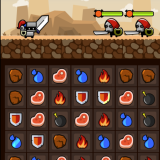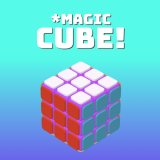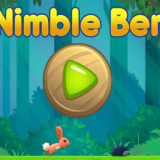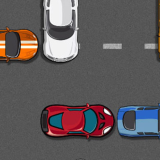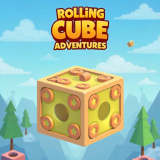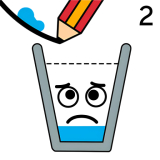I remember the first time I stumbled across a stickman defenders game. It was 2014. I was killing time in an airport lounge in Denver, doom-scrolling through the app store looking for anything to distract me from my delayed flight. What started as a desperate attempt to pass time turned into a three-hour gaming marathon that nearly made me miss my rebooked connection.
Those simple black stick figures. The waves of enemies. The frantic tapping and strategic upgrades. Before I knew it, I was completely hooked on what seemed like such a basic concept. How could something so visually minimalist be so darn engaging?
That's the beauty of the stickman defenders genre, isn't it? The deceptive simplicity that masks surprisingly deep gameplay systems. I've spent the last eight years diving deep into these games for both personal enjoyment and professional research during my time at GamePulse. Ever wonder why such visually simple games can keep you playing for hours? Let's find out together.
The Evolution of Stick Figures | From Doodles to Digital Defenders
Stick figures have been with us since... Well, basically forever. Cave paintings, ancient hieroglyphics, and the sketches we all made in the margins of our notebooks during particularly boring high school lectures. There's something fundamentally human about representing ourselves in the simplest possible form.
But the journey from doodle to gaming phenomenon? That's where things get interesting.
The earliest digital stick figure animations I remember were those early Flash animations on sites like Newgrounds anyone else spend WAY too many hours watching those in the early 2000s? Those crude but charming animations laid the groundwork for what would eventually become a legitimate gaming subgenre.
I used to think the simplicity of stickman defenders was just about keeping production costs low. But after interviewing several developers for a podcast series last year, I realized there's actually a deliberate artistic philosophy behind the choice.
"When you strip away visual complexity, players focus entirely on the mechanics," explained Jamie Chen, developer of Stickman Rush Ultimate, during our conversation. "There's nowhere to hide poor gameplay when your visuals are this minimalist."
That's stuck with me. In an era of photorealistic graphics and cinematic gaming experiences, there's something almost rebellious about the stick figure aesthetic. It's like... a statement? A declaration that gameplay trumps graphics?
What Makes Stickman Defenders Different From Other Tower Defense Games?
Let's get something straight: Stickman Defenders isn't just another tower defense clone with a visual gimmick. Having played probably hundreds of tower defense games during my GamePulse days, I can tell you there are some distinct differences that make this subgenre stand out.
First, there's the focus on individual units rather than static towers. In traditional tower defense, you're placing immobile defensive structures. But in most stickman defender games, your units have personality, limited as stick figures can be, and often some degree of mobility or positioning strategy.
Second is the progression system. Most stickman defender games feature incredibly satisfying upgrade paths that let you transform your basic stick warriors into absolute killing machines. I still remember the first time I fully upgraded a stickman archer and watched it rain devastation on incoming hordes. That dopamine hit was REAL.
Third, and this is something I've debated with my gaming group endlessly, is the pacing. Stickman defender games tend to have faster, more arcade-like pacing compared to their traditional tower defense cousins. Rounds are quicker, decisions are more immediate, and the whole experience feels more action-oriented.
Actually, thinking about it again, I think what really separates these games is their accessibility. The visual simplicity makes them instantly readable; you never have trouble understanding what's happening on screen, even when chaos ensues. That's brilliant game design that doesn't get enough credit.
The Psychology Behind Why We Can't Stop Playing These Games
I used to wonder if I was the only one weirdly addicted to these simple-looking games. Then I saw the download numbers—hundreds of millions for the top titles. Clearly, I wasn't alone in my stick figure obsession.
During my time at Indie Game Review, I had the chance to speak with Dr. Marcus Lipton, a psychologist specializing in gaming behaviors. He explained something fascinating about minimalist games that has forever changed how I view them:
"Games with simple visuals but deep mechanics create what we call a 'flow state' more easily than visually complex games. The player's brain isn't distracted by processing elaborate graphics, so cognitive resources are dedicated entirely to the strategic elements."
That explains SO much about why I've missed subway stops while playing these games! But there's more to it than just flow state. These games masterfully implement what game designers call "compulsion loops," short, satisfying gameplay cycles that make you want to play just one more round. You know the feeling, right? Just one more wave. Just one more upgrade. Just one more... And suddenly it's 2 AM.
The visual simplicity also plays into our brain's natural tendency to fill in gaps. Because stickman defenders give us the bare minimum visually, our imaginations actually work harder, creating a surprisingly engaging experience. It's like reading a book versus watching a movie; sometimes less visual information creates more mental engagement.
The Best Stickman Defenders Games You Should Be Playing
After spending hours researching this, I've compiled my personal top picks in the genre:
Stickman Defenders: Battlefield—the one that started my obsession. What it lacks in naming originality it makes up for with perfectly balanced progression systems. The late-game weapons still give me joy.
Stick War: Legacy takes the basic concept but adds in direct unit control that creates a hybrid between tower defense and RTS. I've lost entire weekends to this one, much to my hiking buddies' annoyance.
The Stickman Defense—Controversial opinion alert: this underrated gem actually improves on the formula with its economy system. The way you have to balance resource generation with defensive positioning creates genuinely challenging strategic decisions.
League of Stickman 2—More action-oriented than pure defense, but the character variety and skill-based combat make this a standout. The boss fights are legitimately challenging!
Stickman Legend: Shadow Fight—OK, so this one leans more into the fighting game territory, but the defensive elements and wave-based challenges earn it a spot on this list. The animation quality is surprisingly good for stick figures!
I wasn't planning to cover this, but I should mention the modding community around some of these games is INCREDIBLE. During my research for this article, I discovered entire forums dedicated to creating custom stickman defenders scenarios. The creativity people bring to such a visually simple canvas is honestly inspiring.
Strategy Tips From Someone Who's Failed A LOT
I'll be the first to admit I was TERRIBLE at these games when I started. My early strategies basically amounted to "place units randomly and hope for the best." That... did not work out well.
After many, many failed attempts, I've developed a few approaches that might help you:
Balance your front line: Most new players make the mistake of focusing too heavily on DPS units. You need tanky units to absorb damage! I generally follow a 1:2:1 ratio of tanks:damage dealers:support units.
Economy first: In games with resource management, always, ALWAYS prioritize your economy upgrades early. I used to rush for the coolest weapons and then wonder why I couldn't afford anything by wave 10. Rookie mistake!
Learn enemy spawn patterns: This was a game-changer for me. Most stickman defender games have predictable enemy wave compositions. Take notes on what comes when, and plan accordingly.
Don't ignore aerial threats: Nothing ends a good run faster than being unprepared for flying enemies. I learned this the hard way during a particularly traumatic public transit gaming session where I nearly shouted in frustration on a crowded train. Not my finest moment.
Wait, I just realized I haven't mentioned upgrade paths! This is crucial in most stickman defender games; it's better to deeply upgrade a few units rather than slightly upgrade many. Focus your resources where they'll make the biggest impact.
The Creative Community | When Players Become Creators
One of the most fascinating aspects of the stickman defenders community is how it's inspired creative expression. During my time researching for this article, I've been blown away by the fan animations, custom levels, and even short comics people have created.
The simple stick figure aesthetic has a surprisingly low barrier to entry for creative expression. I've seen kids as young as 10 creating their own stickman defender scenarios on platforms like Scratch, and some of them show legitimate game design intuition!
This reminds me of a conversation I had with an indie developer at PAX West a few years back. They pointed out that minimalist game art styles democratize creation; you don't need to be a master artist to create something in the stickman style. That accessibility has built a vibrant community of creator-players.
There's even a growing speedrunning community around some of these games, which I find both impressive and slightly concerning for the participants' thumbs. The current world record for completing all 60 levels of Stickman Defense Ultra is just under 47 minutes.
From Mobile to Mainstream | The Commercial Success Story
Let's talk business for a sec (my marketing background is showing). The stickman defenders genre has seen MASSIVE commercial success despite, or perhaps because of, its visual simplicity.
Some numbers that shocked me during my research:
The top 5 stickman defender games have combined downloads exceeding 500 million.
Average session times for these games are around 24 minutes.
Retention rates at 30 days hover around 18%.
Those are numbers that make mobile publishers drool. I remember reviewing the financial reports for several major mobile publishers during my GamePulse days, and the profit margins on these visually simple games were substantially higher than their graphically intensive counterparts.
What's fascinating is how these games monetize. Most follow the typical free-to-play model with in-app purchases, but they've found a sweet spot where players actually WANT to pay. The upgrades feel meaningful, the premium currency has actual value, and most importantly, the games remain fun even if you don't spend a dime.
I used to be pretty critical of mobile game monetization, but I've got to give credit to the better stickman defender games for finding that balance. Though I should probably admit I've spent more on "optional" upgrades than I'd care to share with my accountant. Those special units are just too tempting!
Will Stickman Defenders Evolve or Fade Away?
This is something I've been wondering lately. Gaming trends come and go with alarming speed. Remember when everyone was making Flappy Bird clones? Or the endless runner explosion after Temple Run? Will stickman defenders have staying power?
I used to think these games would be a passing fad, but I've changed my mind after seeing their persistence and evolution over the years. The core appeals to simple visuals; deep gameplay seems to have a timeless quality to it.
What I'm seeing now is an interesting genre hybridization. New releases are blending stickman defenders with roguelike elements, RPG progression systems, and even multiplayer competitive modes. The visual style remains simple, but the mechanical complexity continues to grow.
Some developers are even experimenting with adding limited 3D elements while maintaining the stick figure aesthetic. I'm not entirely sold on this approach, but I appreciate the innovation.
My prediction? The genre will continue to evolve but won't abandon its core identity. The minimalist visuals will remain, but we'll see increasingly sophisticated gameplay systems built around them. And honestly? I'm here for it. My productivity might suffer, but my commutes will definitely be more entertaining.
The Lasting Appeal of Stick Figure Strategy
As I wrap up this deep dive into the world of stickman defenders, I find myself reflecting on why these games continue to captivate me despite their visual simplicity. In a world of increasingly photorealistic gaming experiences, there's something refreshingly honest about games that put mechanics first and let your imagination fill in the details.
I've changed my perspective on these games over the years. When I first discovered them, I saw them as mere time-killers perfect for commutes or waiting rooms but not "serious" gaming. Now I recognize them as masterclasses in focused design principles. They know exactly what they want to be and execute on that vision perfectly.
The next time someone gives you a strange look for being engrossed in what appears to be a simple stick figure game, invite them to try it. I've converted more than a few friends and colleagues this way. My former editor at Indie Game Review was notoriously dismissive of mobile games until I convinced him to try Stickman Defense Ultra during a flight delay. Two hours later, he was still playing and had completely forgotten about our delayed plane.
There's something almost poetic about the fact that one of gaming's most enduring art styles is also its most minimalist. In stripping characters down to their most basic form, these games remind us that great gameplay doesn't need visual complexity to be deeply engaging.
I'd love to hear your thoughts on this! What are your favorite stickman defenders games? Any strategies I missed? Or are you one of the rare gamers who hasn't fallen down this particular rabbit hole yet?
Next week I'll be covering the surprising connections between idle games and productivity psychology, another mobile gaming topic I've become slightly obsessed with since my pandemic deep dive into the genre. Until then, happy defending!
FAQ
Are stickman defender games suitable for kids?
In my experience, the difference comes down to three things: upgrade paths that feel meaningful, enemy variety that forces strategic adaptation, and controls that respond precisely. The bad ones tend to have generic upgrades, repetitive enemies, and frustrating control issues. After playing probably 50+ games in this genre, I've become pretty picky about these elements.
What makes a good stickman defenders game versus a bad one?
You absolutely can play many of these on PC! Some have dedicated PC versions on Steam or Epic, while others can be played through Android emulators like BlueStacks. I actually prefer playing on PC when I'm at home; the larger screen makes strategic planning much easier. That said, the touchscreen interface on mobile often feels more natural for unit placement.
Can you play Stickman Defenders games on PC, or are they mobile-only?
The modern digital stickman animation trend really took off in the early 2000s with Flash animations on sites like Newgrounds and AlbinoBlackSheep (showing my age here). Games followed naturally as Flash gaming became popular. The first true "stickman defenders" style games started appearing around 2010-2012, with the genre really finding its identity around 2014-2015. I've actually been collecting these games since the early days; my first download was probably Stick War back when it was just a browser game.
What's the history behind stickman animations and games?
Despite their simple appearance, many stickman defender games are actually quite processing-intensive. They're calculating numerous unit pathfinding algorithms, damage calculations, and physics interactions simultaneously. More advanced titles in the genre also use particle effects and lighting that consume more power than you might expect. I learned this after an embarrassing incident where my phone died right before an important call because I'd been playing "just one more level" for the previous hour!
- First important point about the content
- Second point with detailed explanation
- Another noteworthy detail
- Final concluding thought
